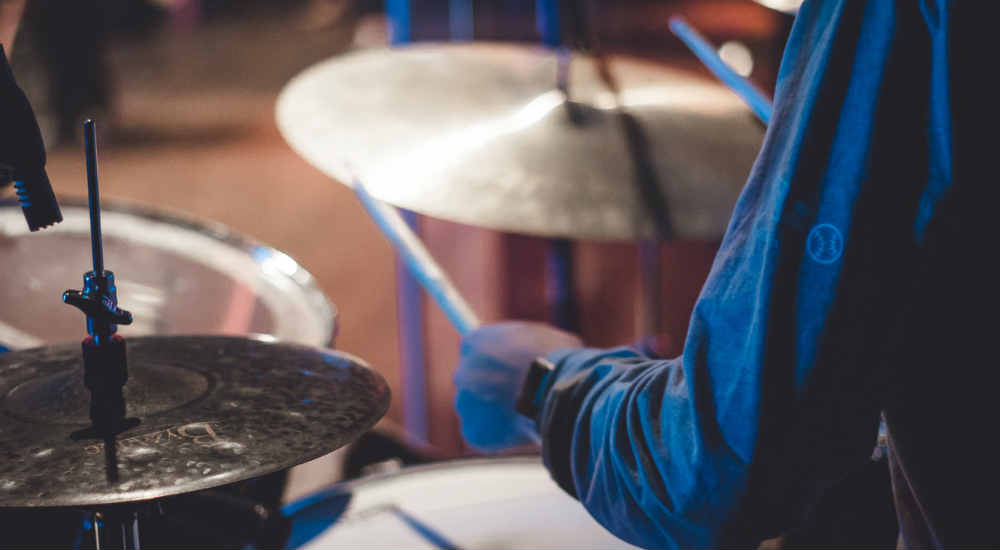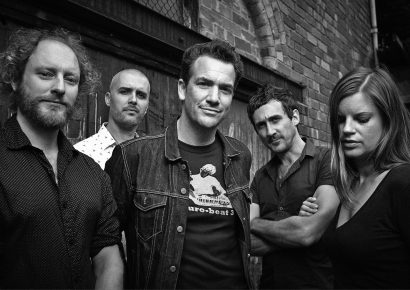I’ve spoken about the inward paradiddle many times in my columns and have even spoken about using the paradiddle as a fill or sticking as well as a groove. This month, I’m complicating things a little and opening a can of worms at the same time. Here are some more advanced ideas to get the wheels turning a little faster.
Looking at the above notation, you can see Figures 1 to 3 demonstrating the inward paradiddle (RLLR LRRL) in a very common accent/sticking pattern I use often. Orchestration is right hand on hats and left hand on snare. All strokes are to be played soft (ghost notes) unless accented. If accented on the snare drum, a rim shot can be used and if accented on the hi-hat, the ‘shank’ of the stick can be used for a thicker sound. In the case of Figure 3, accents on the right hand attract a bass drum while accents on the snare drum are left to themselves. These three ideas are standard practice and everyone should mess around with some accents in different spots within the bar and apply this concept alone.
The idea to step it up is to leave the hands well alone for the rest of the exercises. The position of the hands will remain and the accents will stay. This becomes our ‘static’ groove. We’re still going to mess around with the bass drum parts, but slow and steady wins the race. Figures 4 to 9 look at some basic 8th note variations on the bass drum. Given the fact that the hands, with all their dynamic range and clarity, are static, this can be difficult. The bass drum can be any velocity you wish; a good, present sound is preferable, but you have to be conscious of not letting the bass drum interfere with the hands.
Figures 10, 11 and 12 look at playing the bass drum on each of the semiquaver beats within a grouping of four notes. This too will be challenging, but only because you want to be so picky with the hands. Don’t lose the flow and articulation. Taking things a little further, Figures 13 to 16 introduce 16th note doubles on the bass drum. Each figure places the double stroke a semiquaver later to ensure all parts of the bar have been covered. Standard, but tricky.
Here we get to the meat and potatoes part of this idea. Taking the concept of the double strokes on the bass drum, the idea is to create a polyrhythmic phrase under the static paradiddle ostinato. Figures 17 and 18 experiment with the idea over a single bar, separating each group of doubles by one 16th note, with Figure 17 beginning on the downbeat and Figure 18 beginning on the off beat. This in itself is rather challenging and will take coordination and technique to perform accurately, with full clarity in the hands.
This idea actually ties in nicely with a column I wrote in September last year referring to a foot pattern I’d learned from watching Dennis Chambers. In the videos I’ve seen, Chambers would play left foot on the hi-hat and left bass drum together, followed by two right side bass drums. This would be the ostinato. Chambers would then solo like a mad man over the top while the feet remained at a constant tempo. This time, we’re adding structure in the groove, but playing the pattern in the same way as the previous two figures. By allowing the strokes to keep stretching over the bar lines, we end up with three bars total before the bass drum starts repeating itself (Figure 19). The final figure takes the exact Chambers idea (LF RF RF) and applies this as left foot hi-hat and two right hand bass drums. This creates a three-note sticking with a continuous semiquaver feel ostinato in the feet.
It’s important to remember there are so many ideas here which can be performed with any paradiddle or basically any combination of accents. Really, the options are endless. Your coordination will certainly be boosted, and these ideas might even help your driving.








